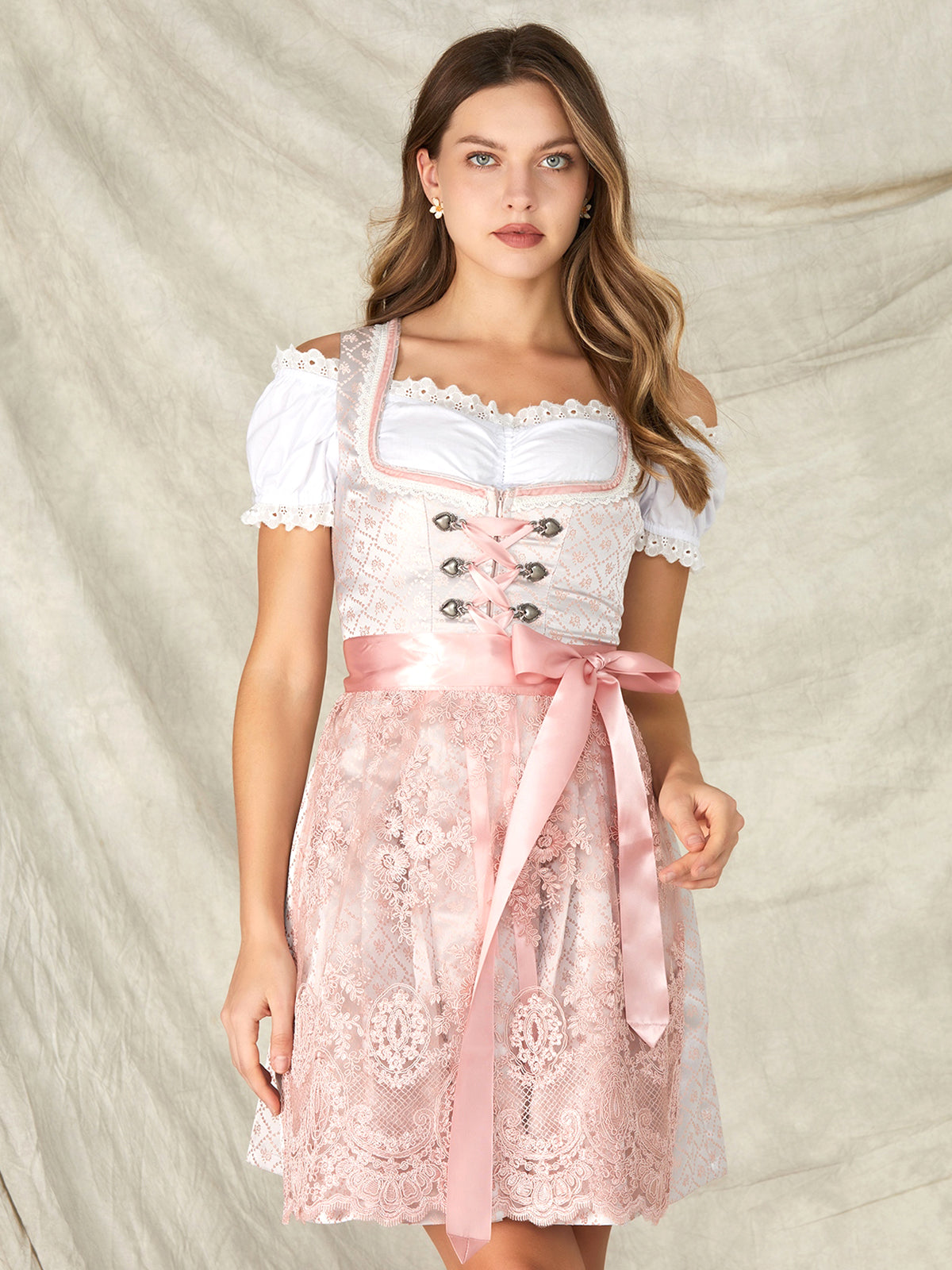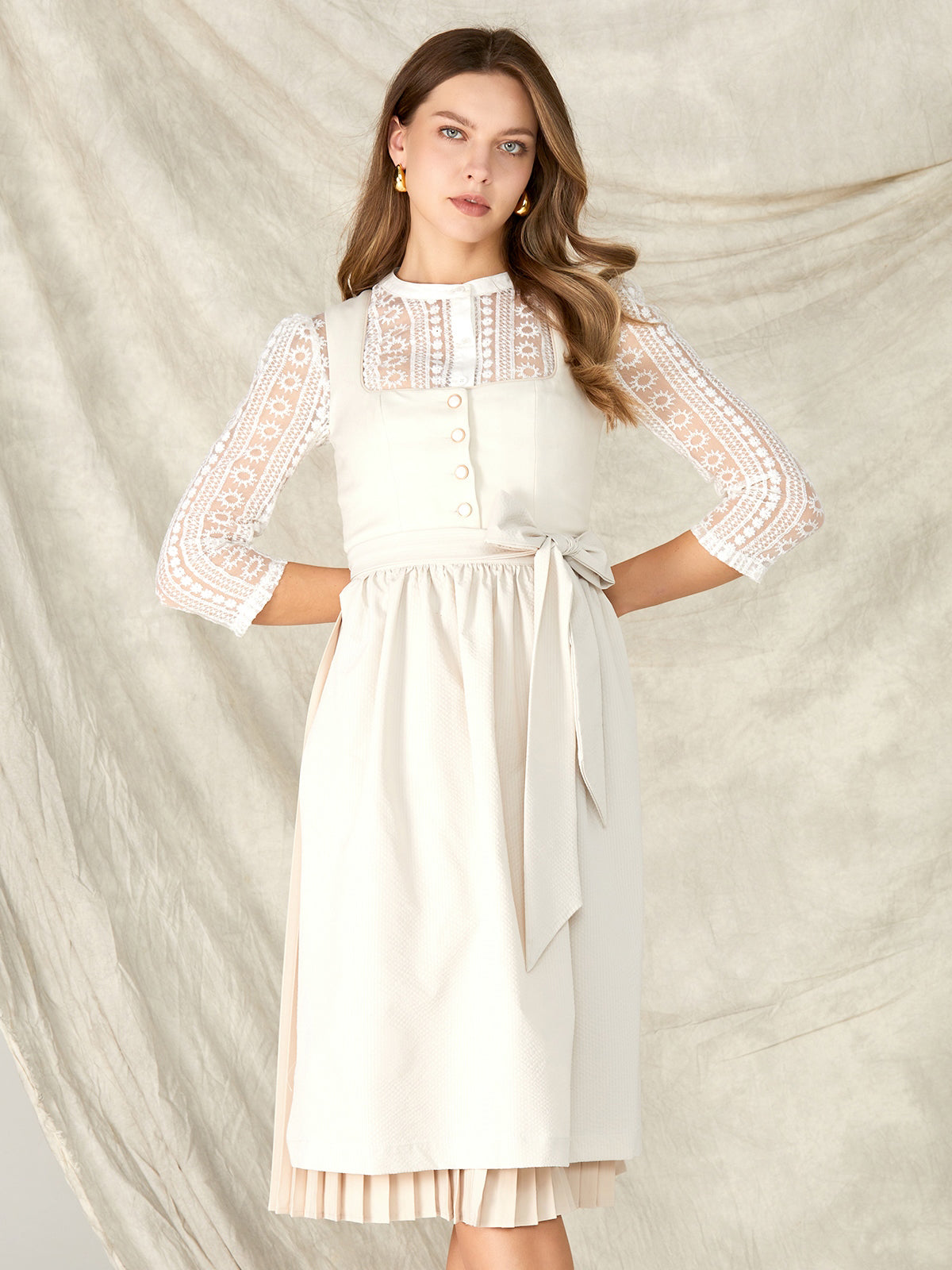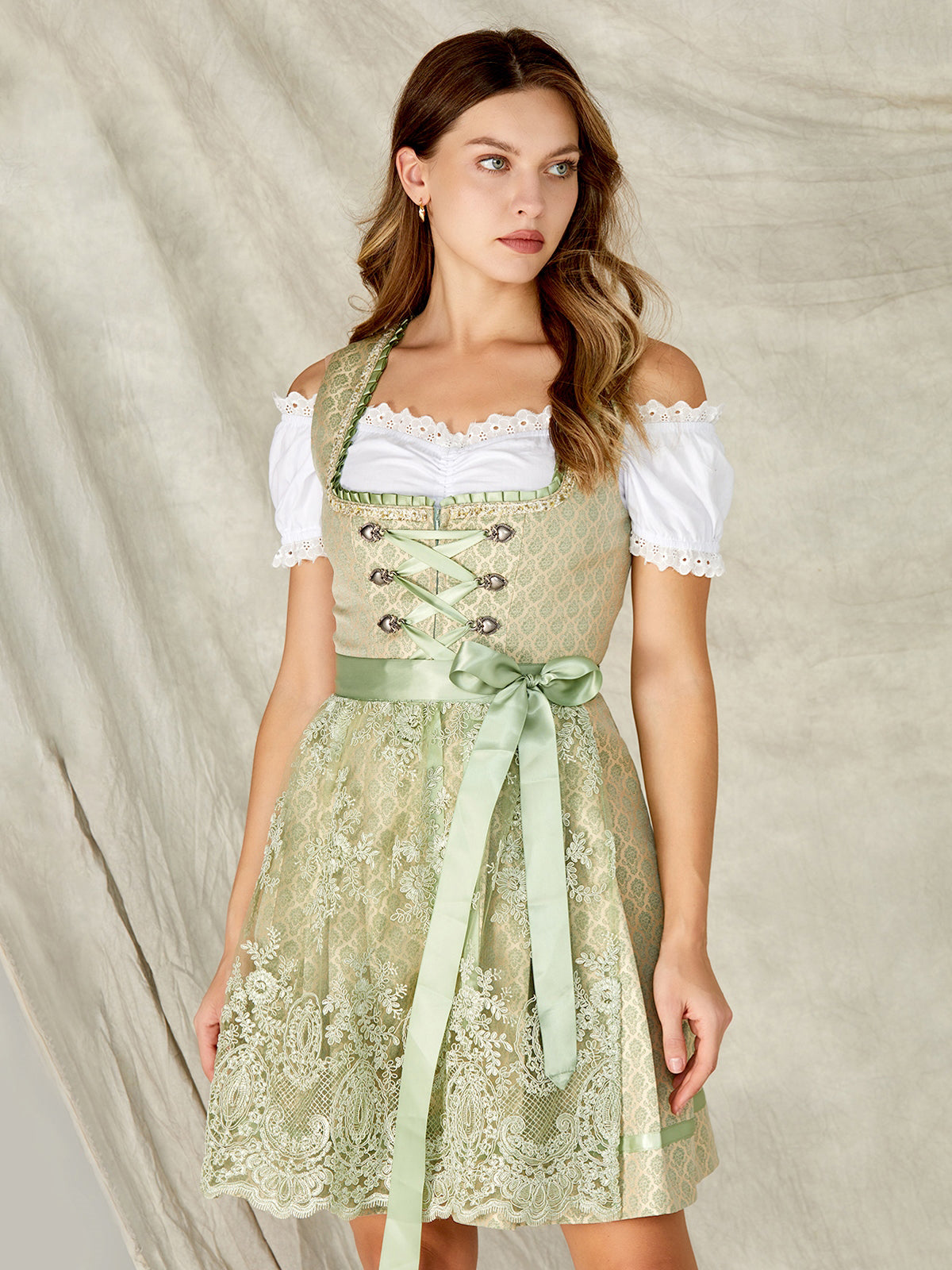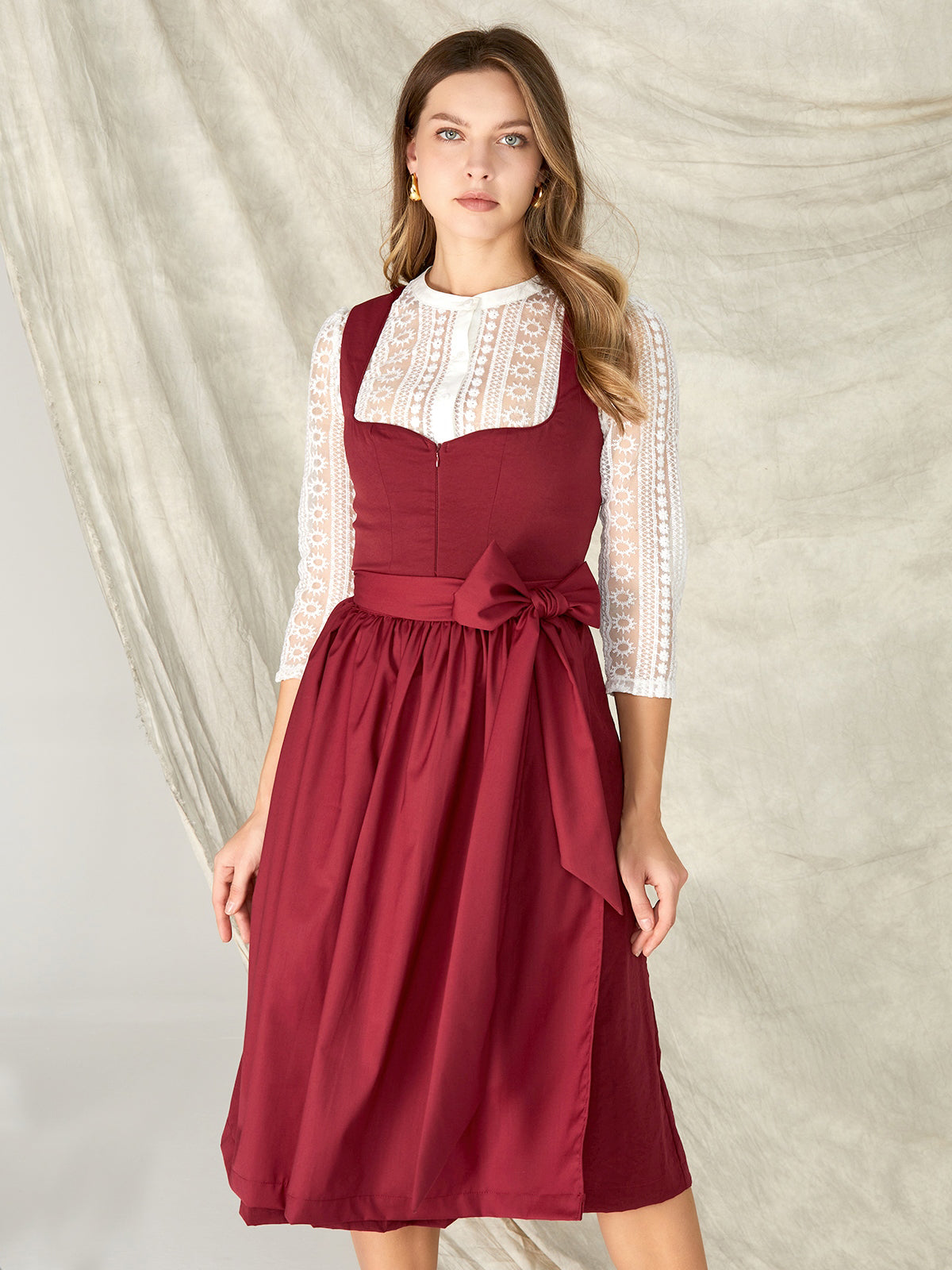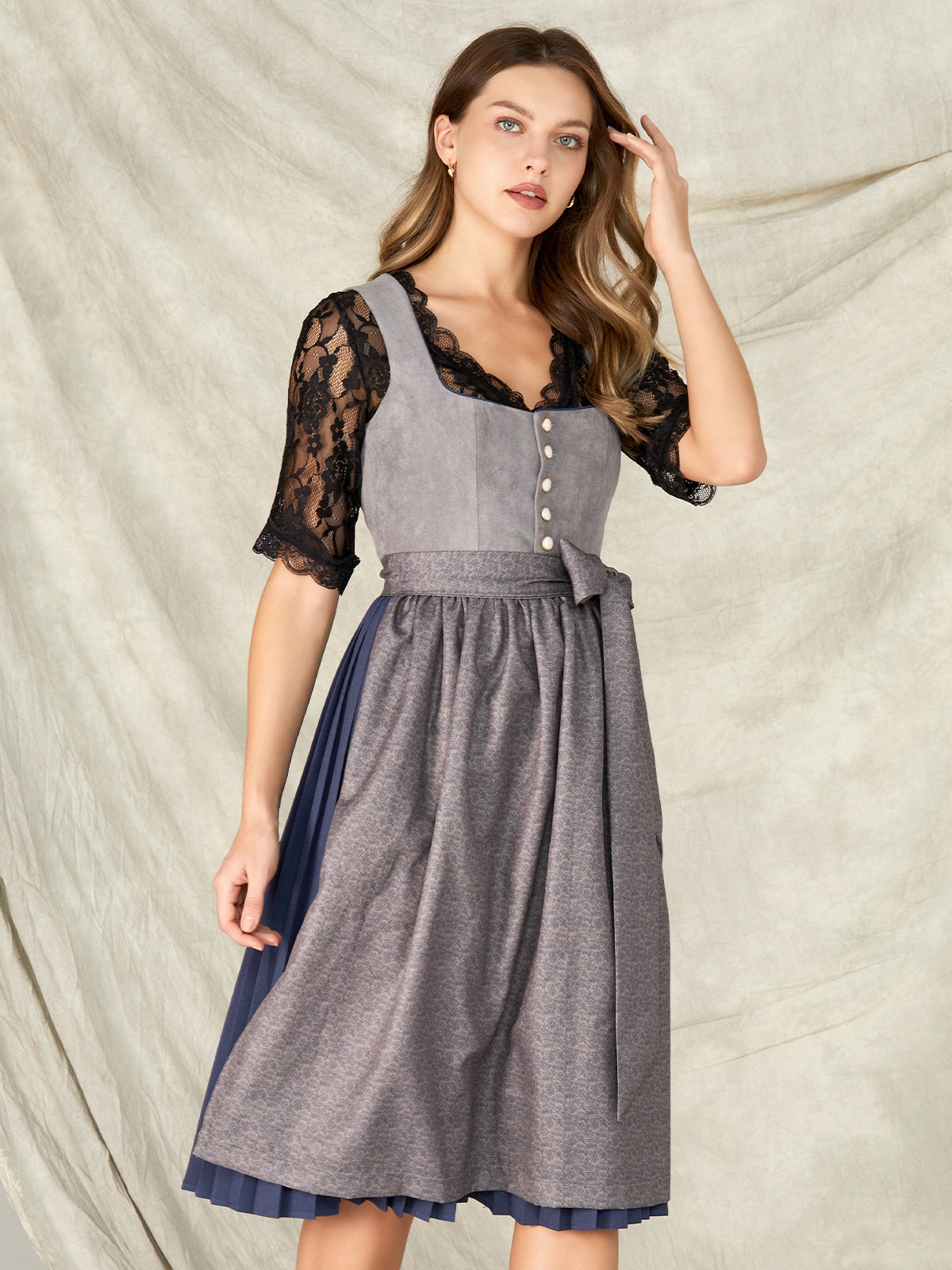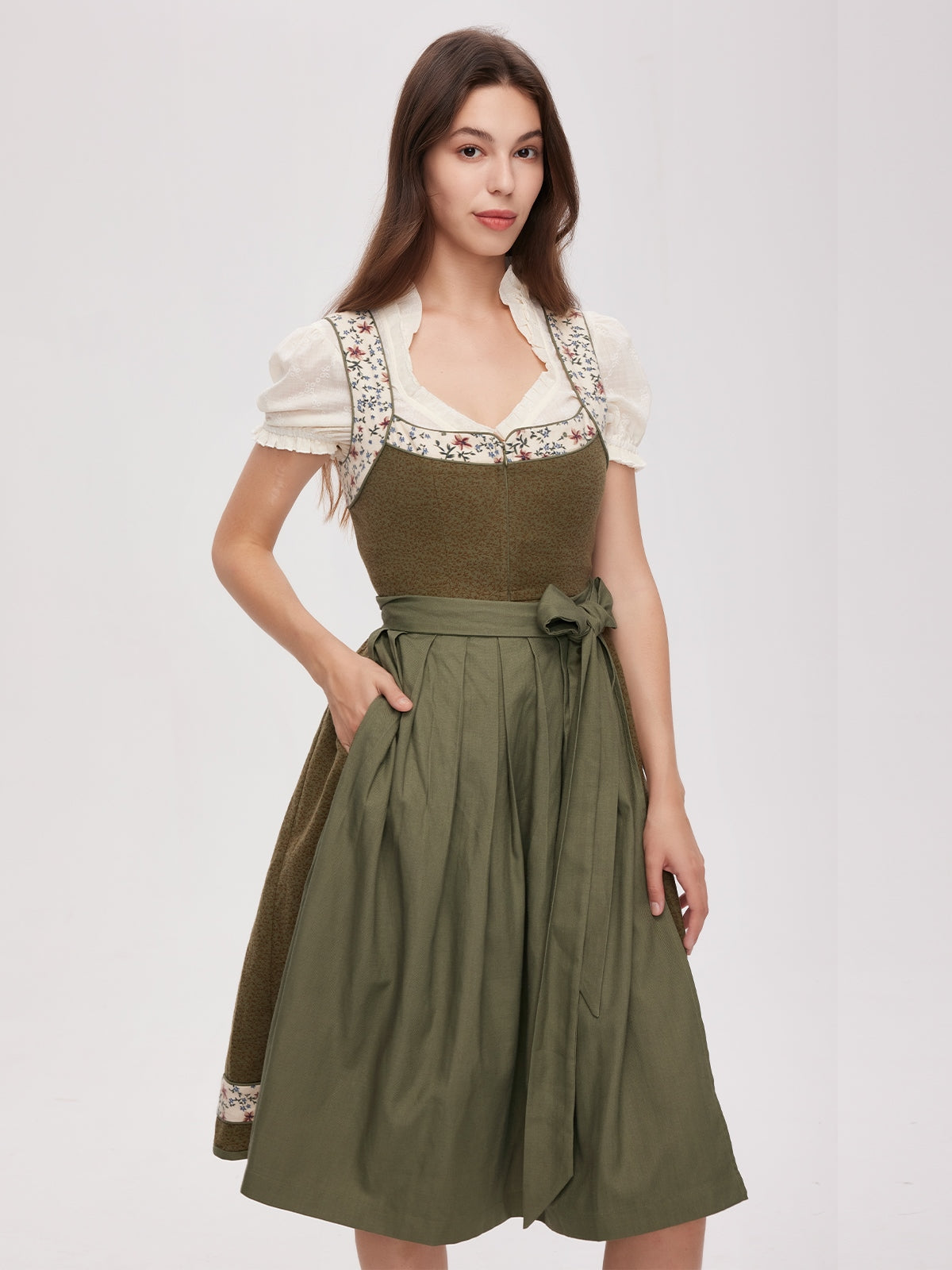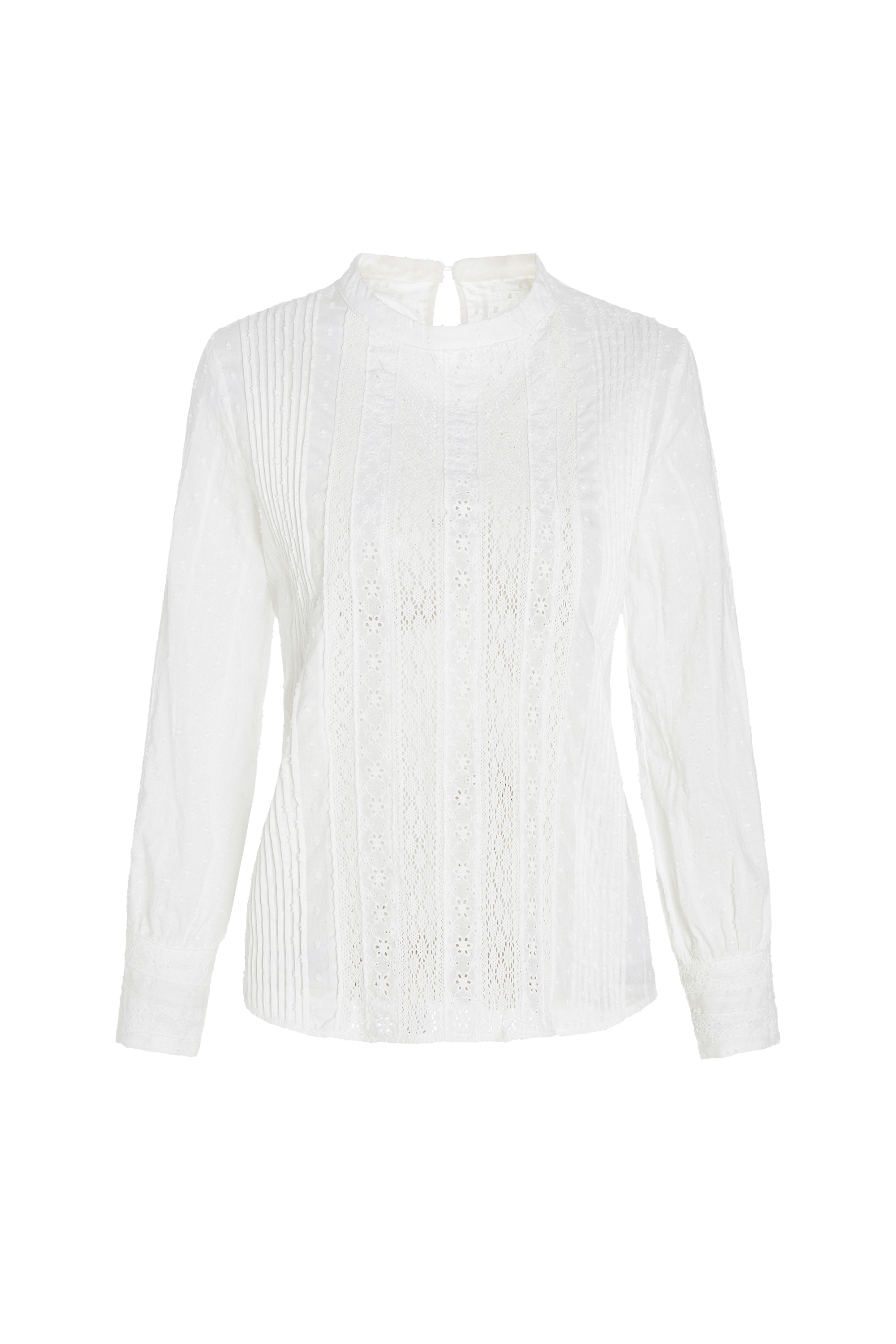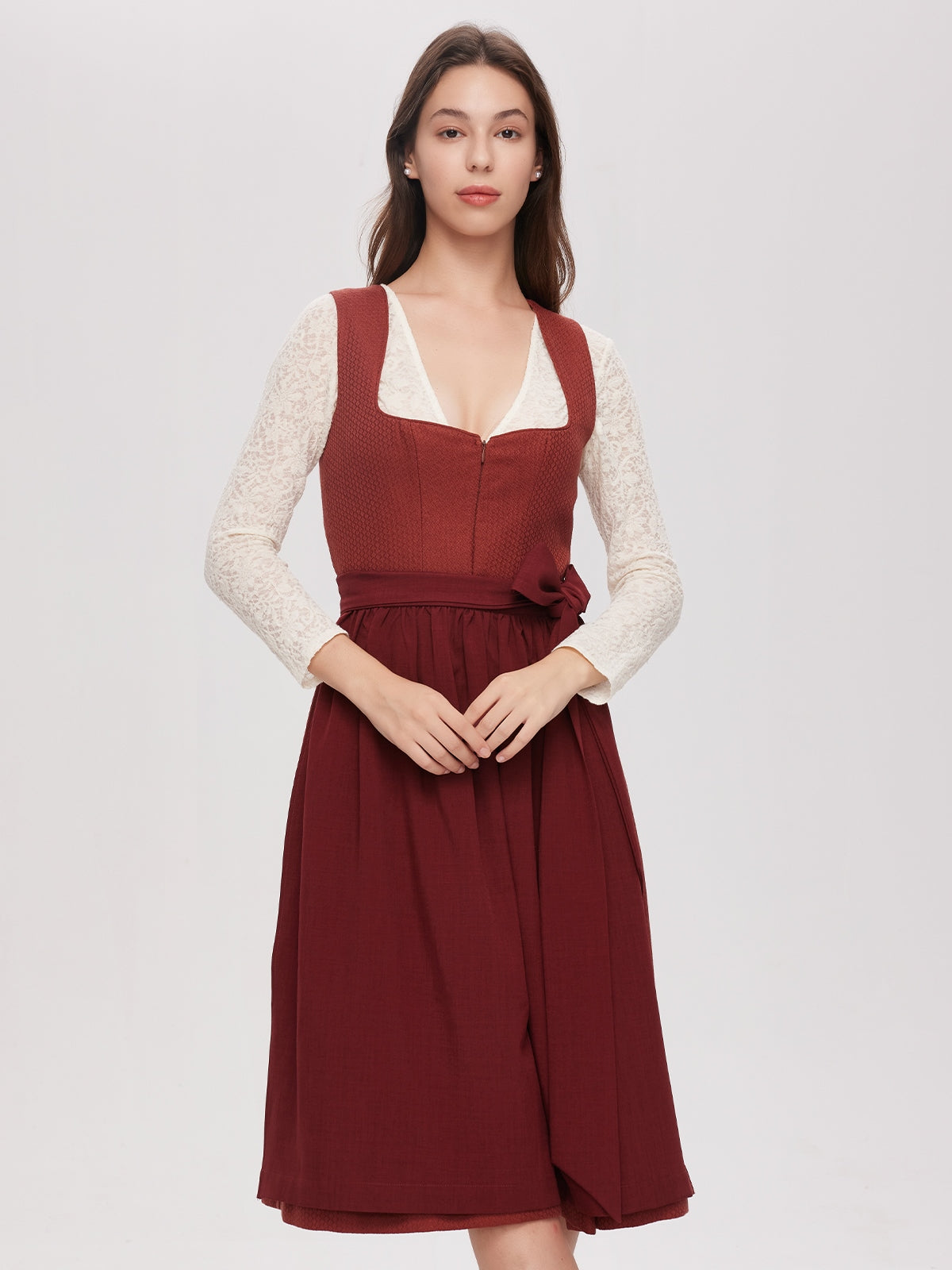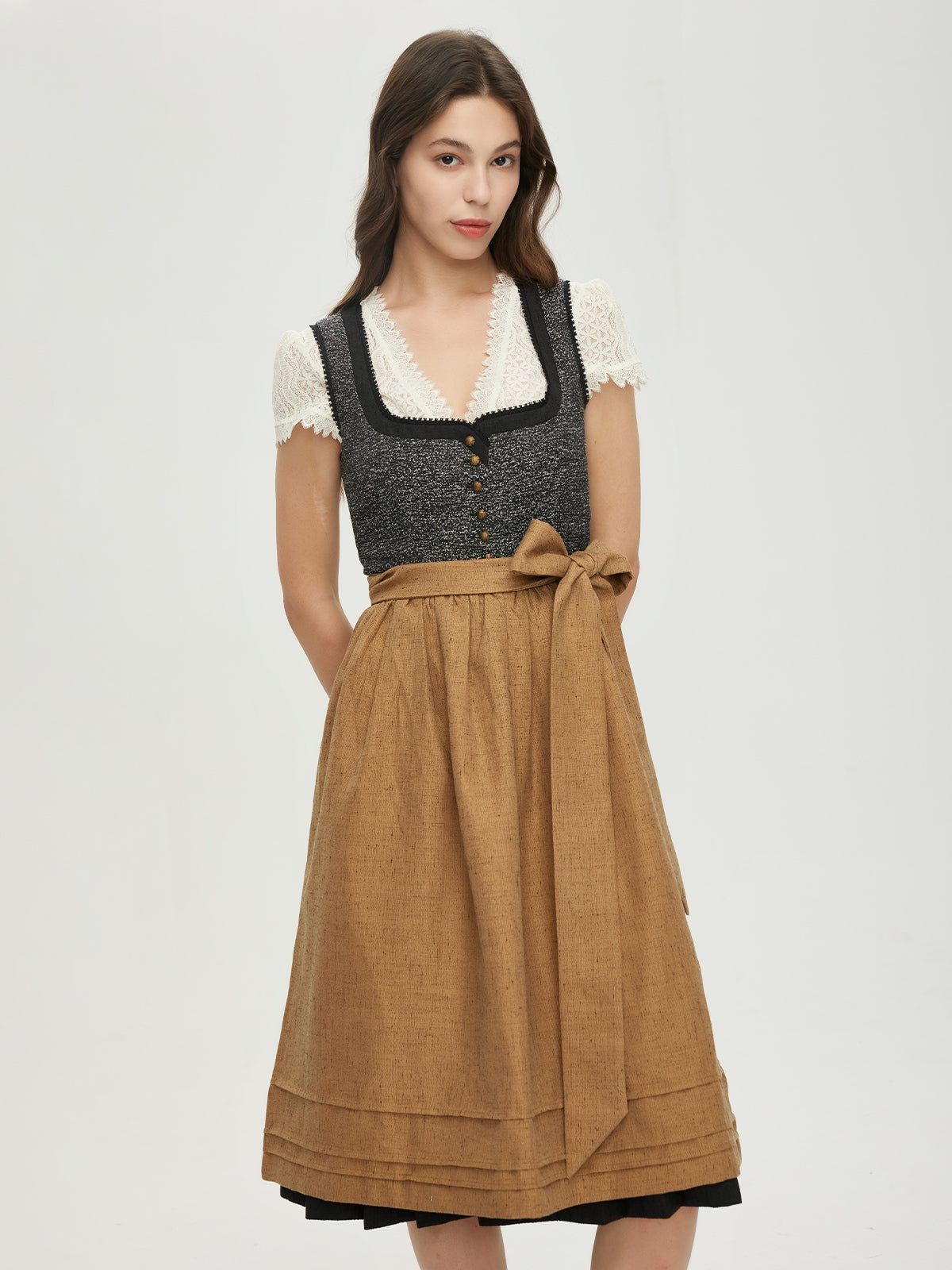Cart
0
The dirndl is not only a traditional garment of Bavarian and Austrian culture, but also a symbol of beauty, femininity, and a certain romantic atmosphere. In this article, we will focus specifically on front-zip dirndls, red velvet dirndls, and red-and-black dirndl combinations, exploring the many facets of these wonderful traditional costumes.
The attraction of red dirndl velvet
A red dirndl dress exudes unmistakable elegance and passion. The smooth, velvety surface of the fabric feels pleasant to the touch and lends the wearer a regal aura. When a woman steps out in a red dirndl dress, she automatically draws attention. Throughout cultural history, the color red has always been associated with love, strength, and vitality. A woman may feel more confident in a red dirndl dress than if she were wearing a simpler garment. She knows she'll stand out and can thus emphasize her own personality and beauty.
The practical zipper at the front
The front zipper on a dirndl is not only a practical feature, but also a stylistic element. It allows the dirndl to be put on and taken off quickly and easily. This zipper is particularly helpful for women on the go or in a hurry. It saves time and ensures that putting on the dirndl doesn't become a tedious ritual. Furthermore, a front zipper also allows you to vary the openness of the dirndl. You can close it higher or lower, depending on the desired effect. A slightly open zipper can exude a subtle hint of seduction, while a closed zipper lends a more understated and classic touch.
The dynamics of the red-black combination
The combination of red and black in a dirndl is a real feast for the eyes. The black highlights the intensity of the red, creating a dramatic yet elegant effect. Red on its own can be striking, but with the black, it creates a harmony that commands attention. A woman in a red and black dirndl can appear both modern and traditional. She can dance at a folk festival in this dirndl just as well as stand out at a formal occasion. The red and black color combination is also a kind of cultural heritage, reflecting the history and tradition of the region where the dirndl has its roots.
Emotional waves when wearing a dirndl
When a woman puts on a beautiful dirndl with a zip up front , red velvet or red and black combination for the first time, a variety of emotions can arise. At first there may be a little uncertainty about whether she is wearing the dirndl correctly and whether it really suits her. But as soon as you look in the mirror and experience the transformation, pride and joy can arise. You feel part of a long tradition and a community. You want to go out and show what you are wearing. But then the fear of attracting too much attention or not looking good enough can also arise. This inner struggle between self-confidence and insecurity is what makes wearing a dirndl such an exciting experience.
The conflict between modernity and tradition
In today's world of fast-moving fashion and constantly new trends, the dirndl faces the challenge of balancing modernity and tradition. On the one hand, the dirndl has its deep cultural roots and should preserve them. On the other hand, many women also want to modernize it and adapt it to their personal needs. The front zipper can be seen as a small step towards modernity, but there are also voices that say it disrupts the original purity of the dirndl. The use of new fabrics and color combinations such as red and black velvet can also provoke controversy. Some insist that only traditional fabrics and colors are appropriate, while others defend the freedom of individual design. This conflict keeps the dirndl in flux and evolves not only as a garment but also as a cultural phenomenon.
The Dirndl as an expression of personality
Despite all the debate and conflict, the dirndl remains a powerful tool for expressing a person's personality. Every woman can tell her own story through her choice of dirndl, be it the type of zipper, the color, or the fabric. A dirndl with an unusual zipper can indicate an open and artistic personality. A red velvet dirndl can represent a woman who isn't afraid to be the center of attention and to show her passion. The red and black combination can be chosen by someone seeking a balance between tradition and modernity. In this sense, the dirndl is not just a piece of clothing but also a kind of visual voice.
The future of the dirndl
What will happen to the dirndl in the future? Will it continue to retain its cultural significance while keeping up with the times? The answer likely lies in the hands of those who wear and appreciate it. If women continue to see the dirndl as a way to express their identity and individual beauty, it will surely live on and evolve. Perhaps even more innovative elements will be introduced that both respect tradition and appeal to modernity. Perhaps new colors and fabrics will be discovered that make the dirndl an even more attractive and contemporary garment. So, the future of the dirndl is open and full of possibilities, and it will be exciting to watch how it continues to evolve.
The Dirndl in society
The dirndl also plays an important role in society. It is not only worn at folk festivals and cultural events, but can also play a role in the fashion world and in the arts. In the fashion industry, the dirndl can serve as inspiration for new collections. Designers can take elements of the dirndl and incorporate them into modern garments. In art, the dirndl can serve as a motif for painters, photographers, and other artists. It can convey the romantic and historical atmosphere of a region, thus strengthening cultural identity. The dirndl is also occasionally used in advertising to promote products or services associated with rural or Austro-Bavarian culture.
Dirndl and international reception
The dirndl has also gained international recognition beyond its borders. Tourists from all over the world are fascinated by this traditional garment and would like to wear it in their homeland or at least take it home as a souvenir. Some countries even hold special events where the dirndl is displayed or can be worn. This demonstrates that the dirndl is not just a local specialty, but is also perceived worldwide as a symbol of beauty and tradition. The international reception of the dirndl can also help promote cultural diversity and build bridges between different countries and cultures.
The Dirndl as a cultural heritage
Finally, it must be emphasized that the dirndl is a valuable cultural heritage. It has lasted through generations and is still relevant today. It embodies the history, customs, and values of a region. It is our responsibility to protect and pass on this cultural heritage. By wearing and promoting the dirndl, we can help ensure that this wonderful tradition is not forgotten. Every dirndl, whether with a zipper down the front, made of red velvet, or in a red and black combination, carries a story and is a part of the cultural identity that we should share and preserve.

